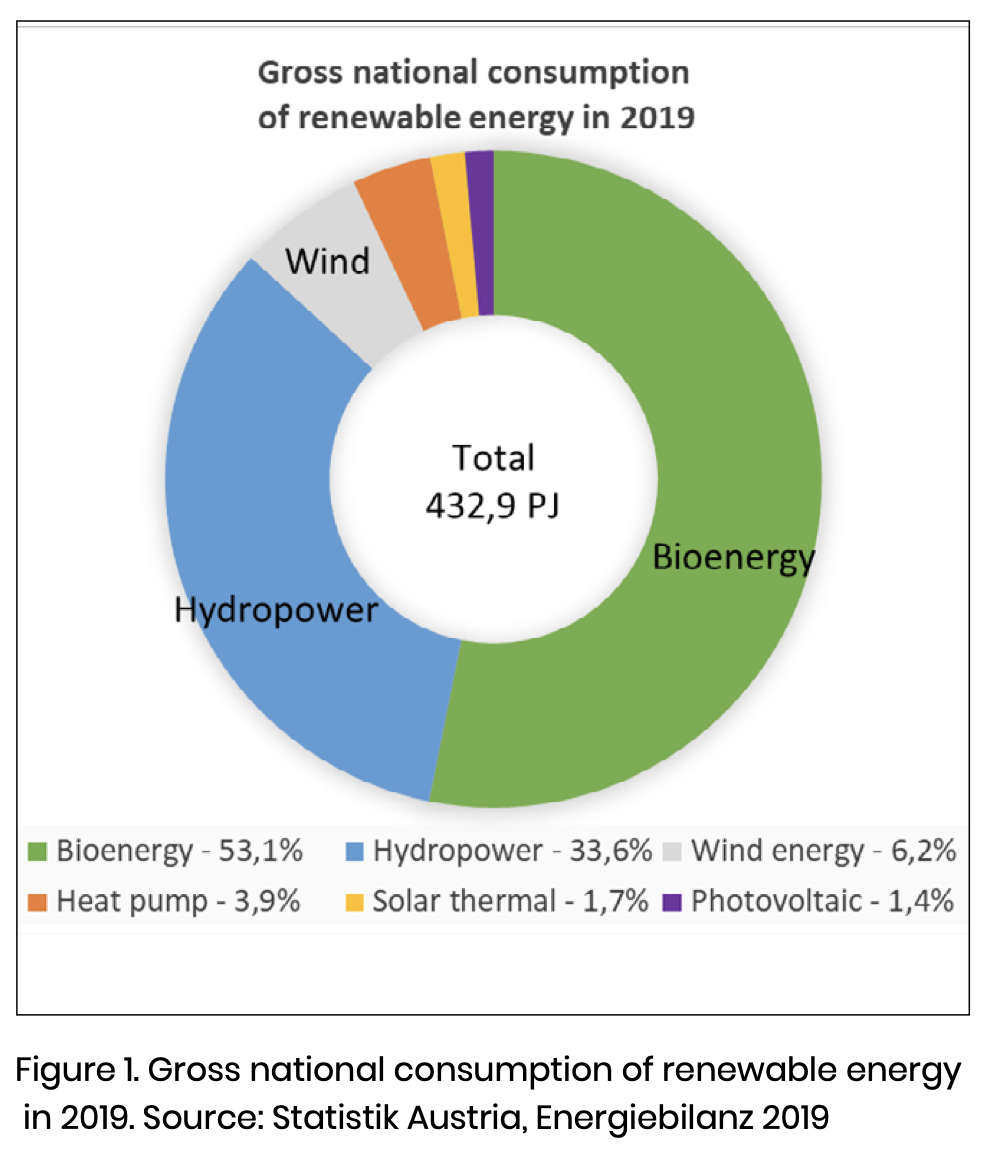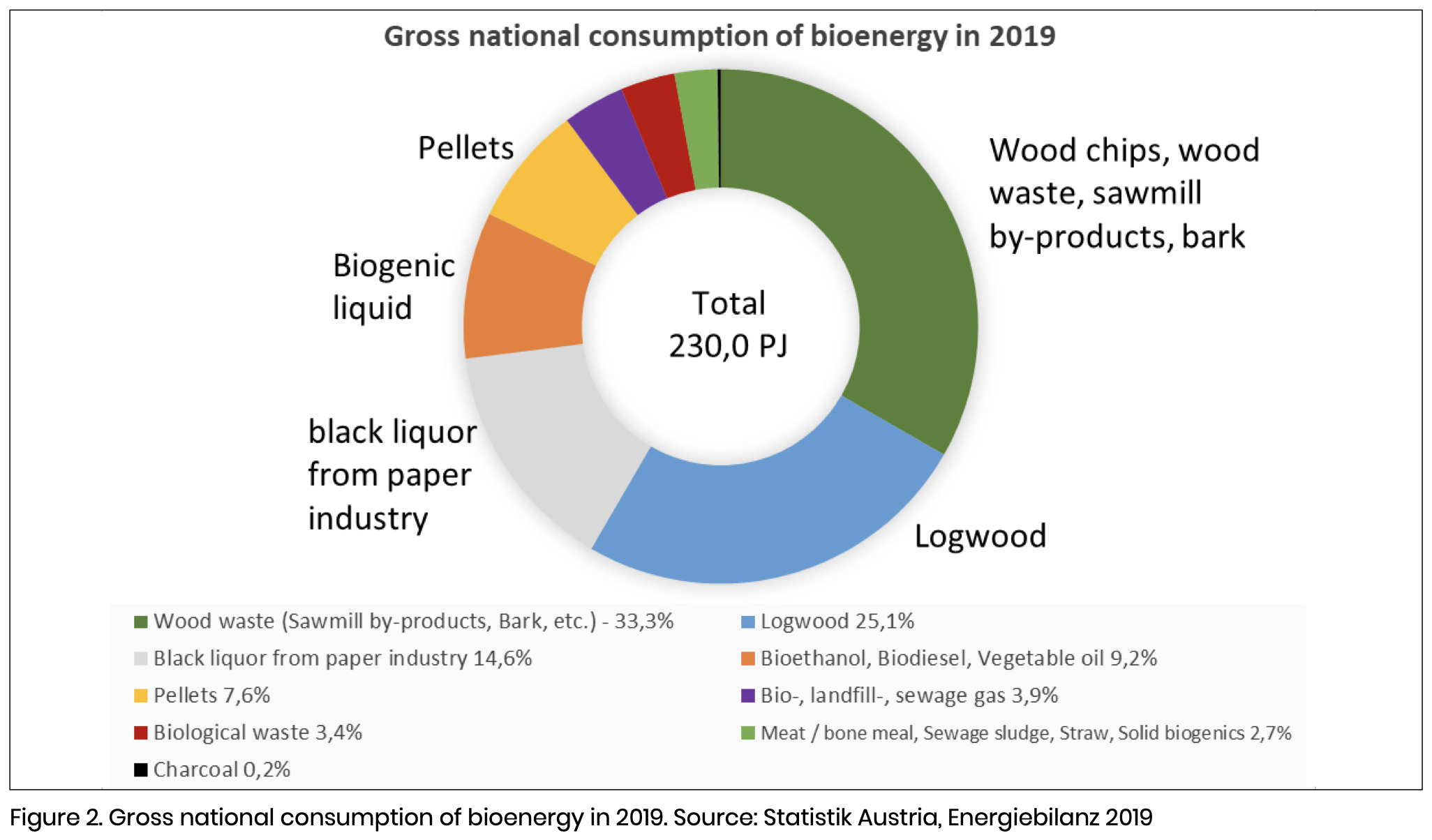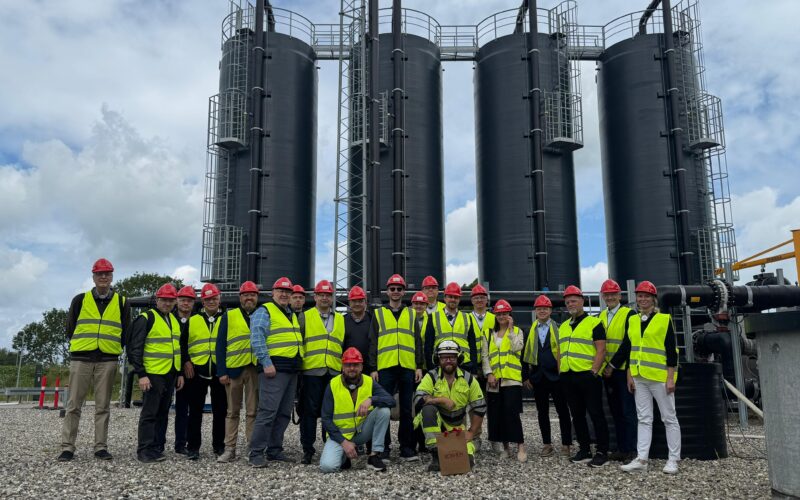Bioenergy in Austria
Despite ambitious targets for the deployment of wind power, solar power (PV) and solar thermal, bioenergy is and will remain the major contributor to renewable energy production in Austria.

Contribution of bioenergy
In 2019, biomass provided 30% of heat demand, 6% of transport fuels, and 6% of electricity; district heat – being the main source of residential heat in Austria – is 50% biomass-based.
Bioenergy facilities
As of 2020, bioenergy in the form of heat, electricity and transport biofuels is being produced in 2,397 biomass heating plants, 151 biomass CHPs, 278 biogas facilities, 8 biodiesel facilities and one ethanol production facility.
Another ethanol facility, producing advanced ethanol from the brown liquor of a specialty cellulose facility, came into operation in early 2021.
Raw materials
The production of bioenergy is primarily based on forest residues. The forest area in Austria currently amounts to roughly 4 million hectares (ha) of a forest, which corresponds to 47.9% of the total state surface. Most of the biomass used in providing this bioenergy is woody biomass, with wood waste such as sawmill residues and bark as well as logwood being the main contributors. While logwood is a common fuel for residential heating, wood waste is used for energy production in the wood-processing industry, in power production, district heating and – in form of pellets – in residential heating.
Why does bioenergy not destroy Austrian forests?
The area of Austrian forests and the stock of wood in Austria have been increasing since the 1960s, and the amount of woody biomass used is around 80% of the yearly stock increase. Around 60% of the wood goes to sawmills, some 20% to the industry (e.g. for pulp production or for material use) and the remaining 20% is used directly to provide heat. Saw dust – a residue from the saw industry – is used to produce pellets for energetic use in industry and households.

The economy
The bioenergy sector provides around 24,000 green jobs and creates an annual turnover of some 3 billion €. Austria has significant technological expertise in wood-processing industries, pellet production, pellet and wood chip boilers, district heating as well as transport biofuel production. Technological expertise has been developed on the basis of a strong national demand, and many companies are now exporting their technologies. Currently, Austria’s experience is useful for Ukraine and needs to be studied.
A few facts:
Pellets production in Austria amounted to 1.54 million tons in 2020, of which two thirds are used in Austria and one third is exported.
Pellet boilers, along with log wood boilers and wood chip boilers, are an important source of residential heat in Austria.
Although the number of biomass boilers is steadily increasing, fine dust emissions from space heating have largely decreased due to cleaner boiler technologies and greater boiler efficiencies.
Regulatory and legal framework
The political framework is defined by EU regulations, with the Renewable Energy Directive being the most powerful driver for bioenergy deployment. National measures for the heating and cooling sector include the Environmental Measures Support Act, which is a support for environmental protection in general, and the guidelines for domestic environmental support, which specifically promote renewable energies.
The Renewable Energy Deployment Act is the support policy for energy from renewable sources in the electricity sector. A new element herein is the possibility to form energy communities in which citizens can trade their own renewable electricity production with their neighbors.
A new element herein is the possibility to form energy communities in which citizens can trade own renewable electricity production with their neighbours. For the transport sector the most important piece of legislation is the Fuel Ordinance Amendment, establishing a quota for biofuels.
Further research and development work on bioenergy technologies is still ongoing and funded through the Federal Ministry for Climate Action, Environment, Energy, Mobility, Innovation, and Technology. International collaboration through IEA Technology Collaboration Programmes such as IEA Bioenergy is one important element.


